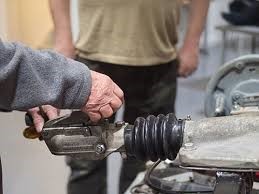
Travelling to Antarctica
December 30, 2023
Email Marketing Jobs Remote: Crafting Compelling Campaigns From Anywhere
January 1, 2024‘Wear and tear’ is a term that is used to describe everyday deterioration in the condition of a car over time when it is being used in a normal way. ‘Fair wear and tear’ is a level of deterioration that is deemed reasonable.
At the end of a leasing agreement, the leasing company will inspect the vehicle to make sure that any damage falls into this category. The British Vehicle Rental and Leasing Association (BVRLA) has set out guidelines as to what constitutes fair wear and tear and all leasing companies have to follow these guidelines.
What is considered fair wear and tear under these guidelines?
Minor scratches of up to 25mm that don’t expose the bare metal or primer are acceptable, as are minor scratches on the windscreen as long as they don’t affect the driver’s view. Small scuffs on alloy wheels are allowed, as is some wear to the tyre tread, as long as the tread depth is comfortably above the legal minimum. Light staining on the driver’s seat area is also acceptable.
Car leasing Bristol
If you are interested in leasing a car and you are based in the South-West, there are several specialists in car leasing in Bristol and the surrounding areas. Many of these have useful online resources, such as the examples seen here: autolyne.co.uk/car-leasing-near-me/bristol.
What is considered unreasonable wear and tear?
Unreasonable wear and tear includes (but is not limited to): chips or dents in the bodywork, chips or major scratches on the windscreen, noticeable damage to the wheels or trims, larger (over 25mm) scratches, scuffs, or scrapes on the paintwork, any impact damage from collisions or bumps, strong unpleasant odours, and rips, burns, or holes in the seats of the vehicle.



